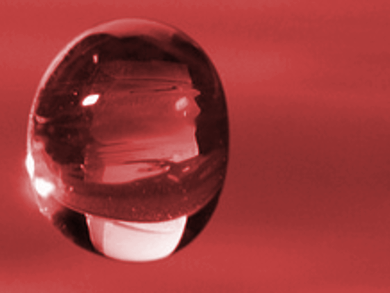Bartosz Grzybowski, Institute for Basic Science (IBS), Ulsan, and Ulsan National Institute of Science and Technology, both South Korea, and colleagues have created droplets with a special nanoparticle skin. The researchers call it a multi-responsive surfactant.
In the surfactant, gold is connected with another nanomaterial, such as Fe3O4. The part of the surfactant that contains gold, is coated with hydrophilic ligands. The other part is coated with hydrophobic ligands. This allows the particles to form monolayers at the interface of organic and aqueous solutions. The researchers also use the surfactant to manipulate the orientation of the droplets, transport something inside a droplet, and to mix droplet contents.
Fe3O4 makes the particles magnetic. A magnetic field can be used to move the droplets. Laser light generating heating and convection effects near the nanoparticles can be used to position and spin the droplets. Electrostatic fields can cut tiny holes in the droplets. When two such particles touch, they can merge and combine their contents. Fluids can be mixed because the fluid in the middle of the droplet is rotating with a different speed than the fluid at the edge.
The team used such functionalized nanoparticle dimers as reaction flask: They combined a droplet containing CoCl2 with a droplet containing 1-methylimidazole with laser light. They were merged with an electrostatic field. Their contents were mixed with laser light to create the metal-organic framework ZIF-67. According to the researchers, such multi-responsive surfactants could provide ways of manipulating individual droplets and assembling them into larger systems of dynamic reactors.
- Systems of mechanized and reactive droplets powered by multi-responsive surfactants,
Zhijie Yang, Jingjing Wei, Yaroslav I. Sobolev, Bartosz A. Grzybowski,
Nature 2018.
https://doi.org/10.1038/nature25137




